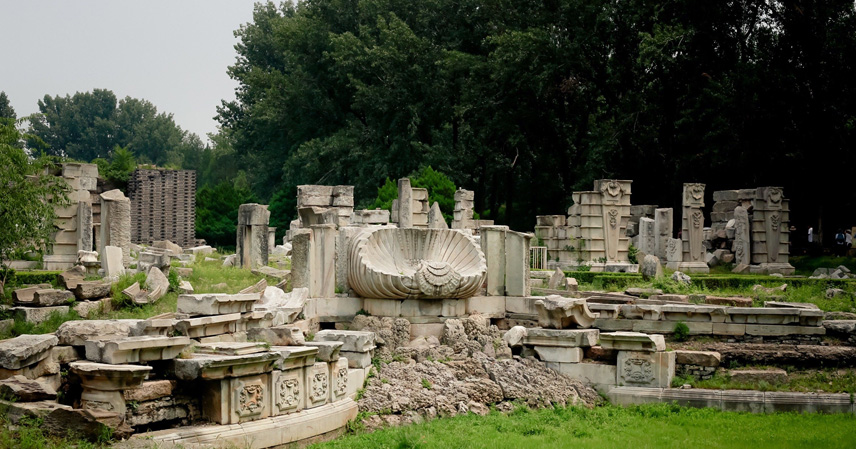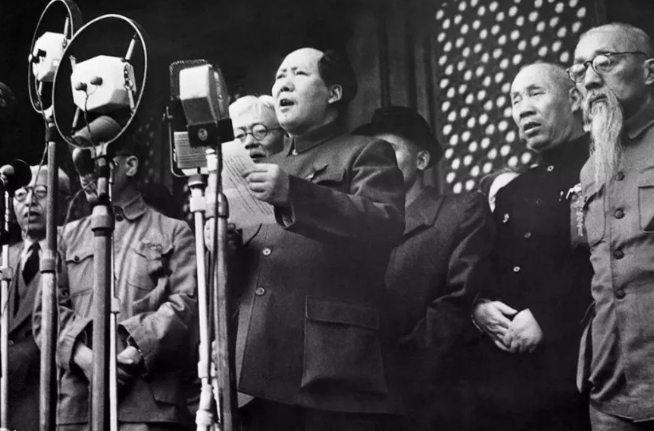The Old Summer Palace, or Yuanmingyuan, once stood as a pinnacle of Chinese culture, embodying the ambitions of emperors and the artistry of craftsmen. Today, it lies in ruins, its crumbling walls weathered by wind and sun, whispering tales of over a century of humiliation. While the Anglo-French invasion of 1860 set its destruction in motion, that was merely the beginning of its trials. Wars, looting, and neglect followed, ensuring this once-glorious garden could never reclaim its former splendor.
The Golden Age of a Royal Garden
The story of Yuanmingyuan begins in 1707 under Emperor Kangxi, who ordered its construction in Beijing’s northwest Haidian district, spanning 350 hectares. During the Yongzheng and Qianlong reigns, it became the Qing Dynasty’s cherished jewel, adorned with scattered palaces, winding streams, and serene lakes. Its collection of treasures—from Shang and Zhou bronzes to Tang and Song paintings—was unparalleled, each piece a national treasure.
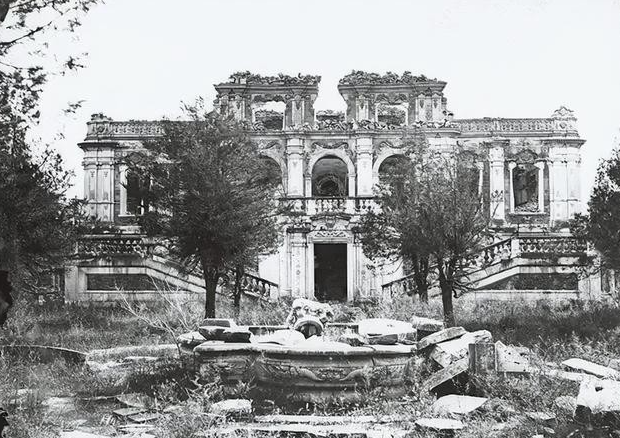
Emperor Qianlong, particularly fond of the garden, hosted foreign dignitaries and lavish banquets here, rivaling festive celebrations. The Western Mansions section stood out, blending Chinese and European styles with the Great Fountain gushing and stone pillars soaring, a global architectural marvel of its time. Yet, this splendor was short-lived. By the mid-19th century, the Qing Dynasty’s decline, exacerbated by the Opium Wars, left the empire financially drained and vulnerable.
A Cascade of Calamities
In October 1860, during the Second Opium War, Anglo-French forces stormed Beijing, targeting Yuanmingyuan as a symbol of Qing power. Soldiers swarmed like locusts, looting gold, silver, jade, and porcelain, tearing down silk curtains, and chopping precious furniture for firewood. Ancient manuscripts and paintings were burned to ashes. On October 18, British commander Lord Elgin ordered the palace set ablaze. For three days and nights, flames engulfed the garden, reducing wooden beams to crackling embers, shattering glazed tiles, and toppling the Western Mansions’ stone columns. Lakes dried up, century-old trees turned to charcoal, and Beijing’s air reeked of smoke as residents watched the inferno from afar.
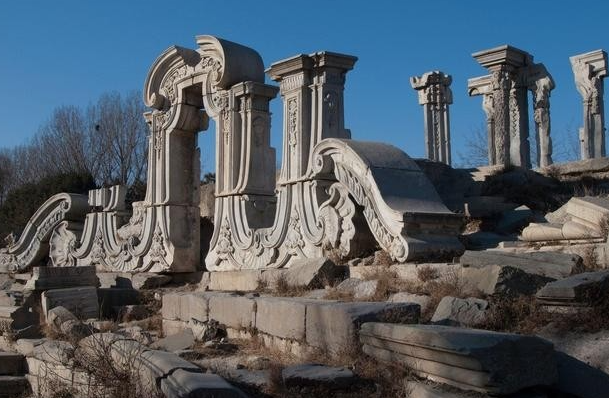
The devastation didn’t end there. In the late Qing era, warlord conflicts saw villagers cart off remaining bricks and tiles for houses and pigsties. In 1900, the Eight-Nation Alliance plundered what little remained, shipping stone carvings and bronzes to Europe. During the Republic of China period, Yuanmingyuan was abandoned, overtaken by weeds taller than a person and lakes choked with silt. By the mid-20th century, farmers, desperate to survive, turned the grounds into farmland, burying stone paths in the soil. The royal aura was gone.
Why Not Restore It?
Restoring Yuanmingyuan was never a simple task. In the late Qing, the treasury was bankrupt, with no funds to rebuild. After the founding of the People’s Republic of China, priorities shifted to infrastructure, education, and industry—Yuanmingyuan took a backseat. Reconstruction isn’t just about rebuilding structures; the intricate craftsmanship of carved beams and glazed tiles was lost to war, and Qing-era blueprints and records were mostly destroyed or missing, making authentic restoration nearly impossible.
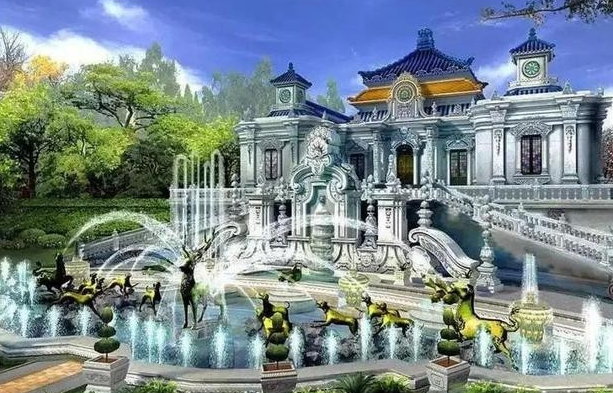
Moreover, many looted artifacts remain abroad—bronze relics sit in British museums, and jade carvings occasionally surface at French auctions, their recovery a diplomatic challenge. Beyond logistics, there’s a deeper reason: the ruins themselves are a living history lesson. The fire of 1860 didn’t just destroy a garden; it seared a wound into the Chinese psyche. Authorities believe preserving the ruins serves a greater purpose than rebuilding a glittering palace. Each broken stone screams, “Never forget national humiliation!” This raw historical weight outweighs the allure of a restored garden.
Preserving the Ruins as a Reminder
In the 1980s, China began protecting the Yuanmingyuan site. Workers cleared overgrown weeds and dredged silted lakes, restoring their gentle ripples. The Yuanmingyuan Ruins Park was established, allowing visitors to walk stone paths and view weathered pillars and crumbling walls. An exhibition hall displays old photos and artifact fragments, narrating the garden’s rise and fall. Each year, countless visitors, including students attending history lessons, pause to reflect, as if the air still carries the scent of 1860’s smoke.
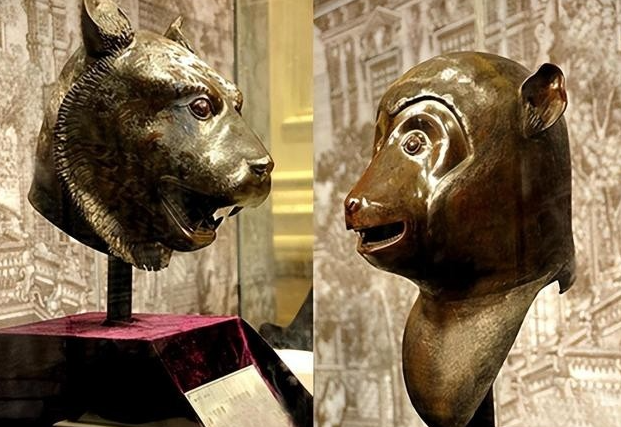
Debates over restoration persist. Some argue rebuilding could revive Qing glory and national pride; others insist the ruins’ starkness is a more powerful reminder that weakness invites aggression. The government chose a middle path: limited restoration to maintain the site while preserving its weathered authenticity. In recent years, diplomatic efforts have reclaimed some artifacts, like the bronze rat and rabbit heads in 2013, now proudly displayed in museums.
For 160 years, Yuanmingyuan’s ruins have endured wind and rain, never forgotten. They are not just Qing relics but a microcosm of modern China’s humiliations. Preserving them isn’t about a lack of funds—it’s about honoring a memory too heavy to erase. More than a restored palace, these broken walls inspire resilience and self-reliance.

